Interlinking with both external and internal articles can be regarded as a boon for content writers. However, this is not possible with the CKEditor link plugin. In CKEditor, all that a user could do to add links is to remember the URL of the content that he/she intends to link which seems pretty inconvenient. This is where Linkit module comes to rescue content writers. This module creates links with nodes, users, files, terms, and fields in a jiffy without breaking a sweat.
“I want to give users a super easy and friendly experience when adding links
I also want Linkit to be very pluggable and configurable so other developers can extend Linkit in an easy way to fulfill their needs.”
-Emil Stjerneman
In this article, we will see how to configure Linkit, add links using Linkit, explore the uses, the importance of links in contents and the benefits a content writer can reap by using Linkit.

Making the Magic Happen
- In order to make Linkit spread its wings, we need to configure it.
Go to Configuration > Content authoring > Linkit Profiles > Add new profile - Upon reaching our destination, we click on 'Add New Profile' which opens a configuration window where we can add a new profile and set parameters for the said profile.
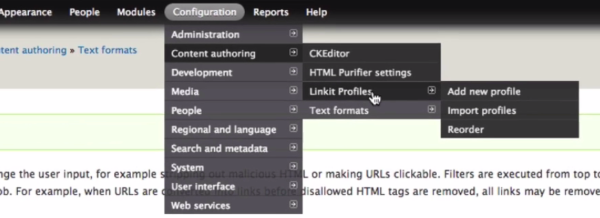
Some important glossary
Administrative title: We begin by entering a name in the Administrative title text box. This is used just for identification of the profile.
Weight: its a drop down menu which displays values from -ve 10 to +ve 10. Higher values precede lower values. This defines which profile a user is being assigned.
Roles with access: This defines who all can access profiles.
Linkit Plugins: Entities such as nodes, users etc to be included in the defined profile. Checking an entity will open up settings for the particular entity.
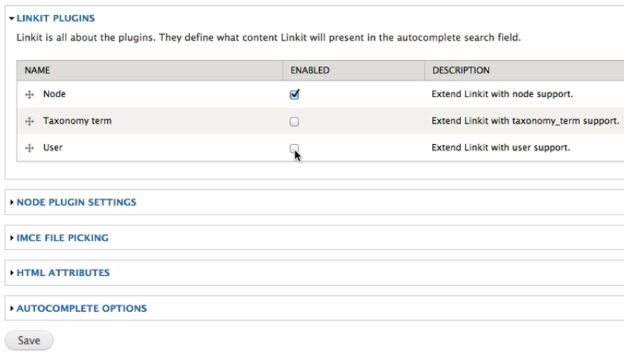
IMCE File Picking: This enables linking of files using the IMCE module. We will discuss how to do so a tad bit later.
HTML Attributes: This setting configures the availability of attributes such as class, accesskey etc when creating a link.
Autocomplete Options: The coolest feature of Linkit is its ability to auto-complete user inputs; the configuration options of which are as follows:
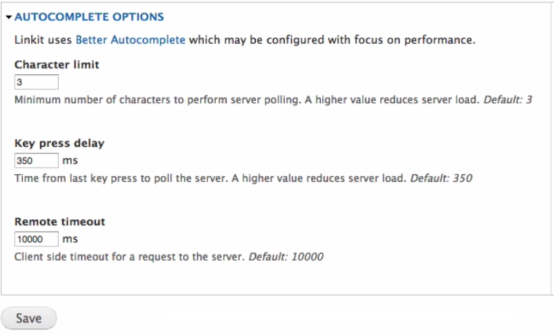
Character Limit: Linkit will start searching for matching results as soon as the set character limit is reached.
Keypress delay: Timeout for populating the result list after an input is made. Unit of time for this option is in milliseconds.
Remote Timeout: This defines the period of time the browser will wait for the server to respond. Timeout limit is to be specified in milliseconds.
Now that we have set up a profile, we click on save.
All we have to do now is make it accessible inside CKEditor. For that, we navigate to
Configuration > Content Authoring > CKEditor
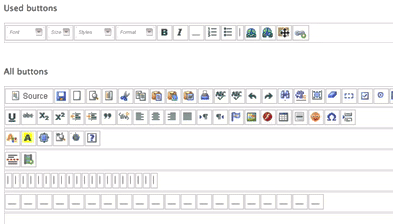
- Scroll to Profile and click on Edit in the Advanced row. This will lead us to a new menu where we can find Appearance Settings. Expansion of this setting will reveal a set of used buttons and a set of all buttons.
- We look for the Linkit button, drag and drop it in the used buttons section.
- Finally, we scroll down and check Support for Linkit module and hit save.
Voila! Linkit is ready to take off.
Adding links with Drupal Linkit
Linkit supports embedding both internal and external links in the contents of a webpage.
Internal Linking
- Click on the Linkit button
- Start typing in the search box.
- Results should start displaying as soon as the set character limit is met. Multiple results would be categorized by entity type.
- Select the desired result and click on Insert Link.
That's it. Everything is set and ready to go.
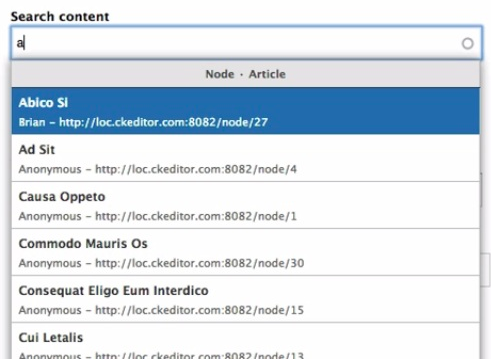
External Linking
- Now, we will see how to link external paths.
- Copy the desired URL
- Click on the Linkit button
- Paste the URL in the target path field.
- Click insert link.
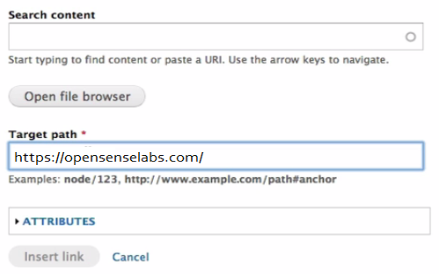
Linking Texts
Suppose, we want to link a word to a page such that clicking on the word redirects us to the linked page. Such type of linking is also possible with Linkit.
- Highlight the text that needs to be linked.
- Click on the Linkit button.
- Now, search for the page using the search box.
- Click insert link.
Linking files
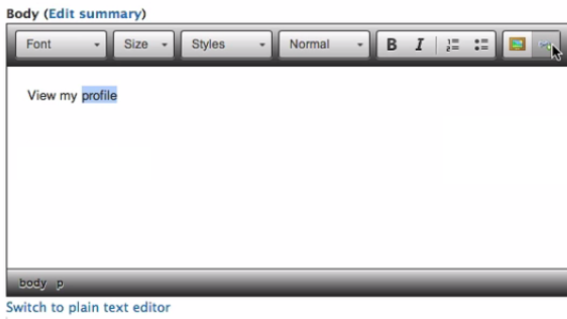
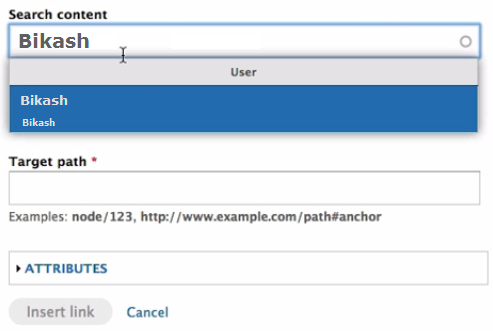
File Linking
- Linkit also helps with linking of files using the IMCE module.
- Highlight the text to be linked to a file.
- Click on the Linkit button.
- Click the Open File Browser button and select the file
- Click on insert link.
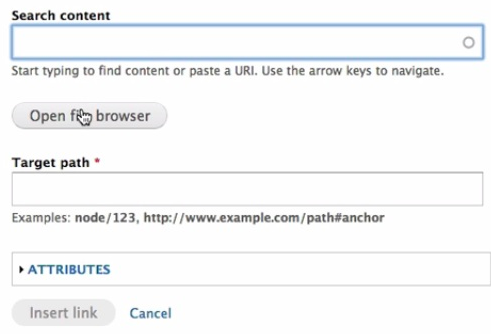
Importance of links and linking
Links play an important role in the SEO strategy of a website. They add to the convenience of the surfers. Below we have discussed some points to portray the importance of links in contents.
Page Ranking
Visitors visit a website because they find the contents of the website relateable or useful. So, providing relevant contents are going to attract more interested visitors and it doesn't matter if the content that they are being provided is being generated internally or is being sourced from somewhere else as long as the link is informative and trustworthy. This will definitely help with the page rankings.
Returning the Favour
When external links to a website are used, it is highly likely that the website is going to do the same by providing links to your website as and when it is relevant to do so. This will in return increment traffic.
Brand Game
Good and valid links will definitely help with the brand image as the surfers are more likely to trust your website for contents. This also helps with being better known in the field because some links may be available only on request which makes way for better conversation and relation with sources.
Keep 'em Engaged
In order to keep a viewer engaged, they need to be directed towards more content. Internal link helps with it by canaling viewers towards contents that are highly likely to interest them.
Better Indexation
For a search engine to better index a page, it is beneficial to have proper internal links that would help bots to crawl the page in a more efficient and effective way.
Convenience
Internal links also add to the convenience of the viewer because if they want to learn more about a term or topic, they can do so by just clicking on the topic.
Reaping the Benefits
Linkit makes it a possibility to add any kind of link at the blink of an eye. Links can be added to files, web-pages etc. Links can be added by just keying in keywords of the related topic. No memorization of URL links are necessary for Linkit to find links.
With Linkit, a content writer can systematically categorize contents by having a specific section for a specific topic. If there is a technical term that the writer thinks would be beneficial for the readers to know more about, then instead of elaborating about the topic in the same section, a link can be provided to another page or section where the term has been described.
Linkit also helps when a quick edit has to be made. The writer can click on the link and quickly jump back and forth between topics and make the necessary amendments.
Broken links are also avoided because there is no possibility of discrepancies creeping in.
As we can see that Linkit is a really useful module that is not only easy to learn but also very easy to master. The simplicity to functionality ratio of this module is amazing. End users can access more information about things they want to know more about just by clicking on links if provided. This will also improve the recommendation rate of the site.
Subscribe
Related Blogs
Inside the Drupal AI Summit: Themes, Speaker and What To Expect

“ The web is changing fast, and AI is rewriting the rules. It writes content, builds pages, and answers questions directly,…
FOST and Drupal AI Initiative: Next Era of Responsible AI

Three years after the launch of generative AI tools marked a new age for artificial intelligence, almost 90% of survey…
Drupal AI Ecosystem Part 5: AI Content Suggestions

Drupal has steadily evolved from being just a content management system into a flexible platform that incorporates emerging…




